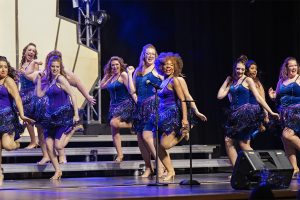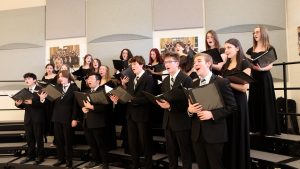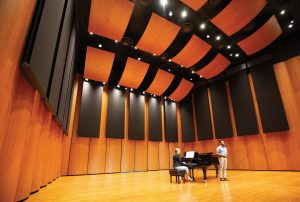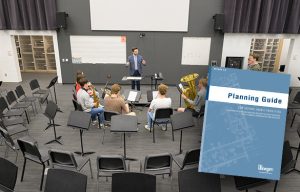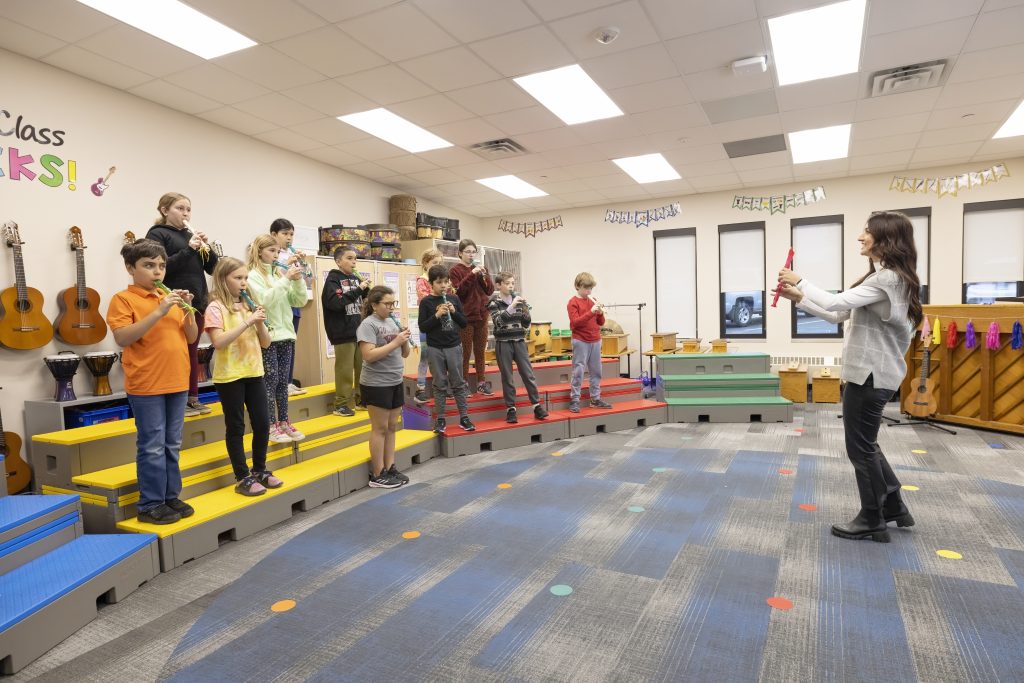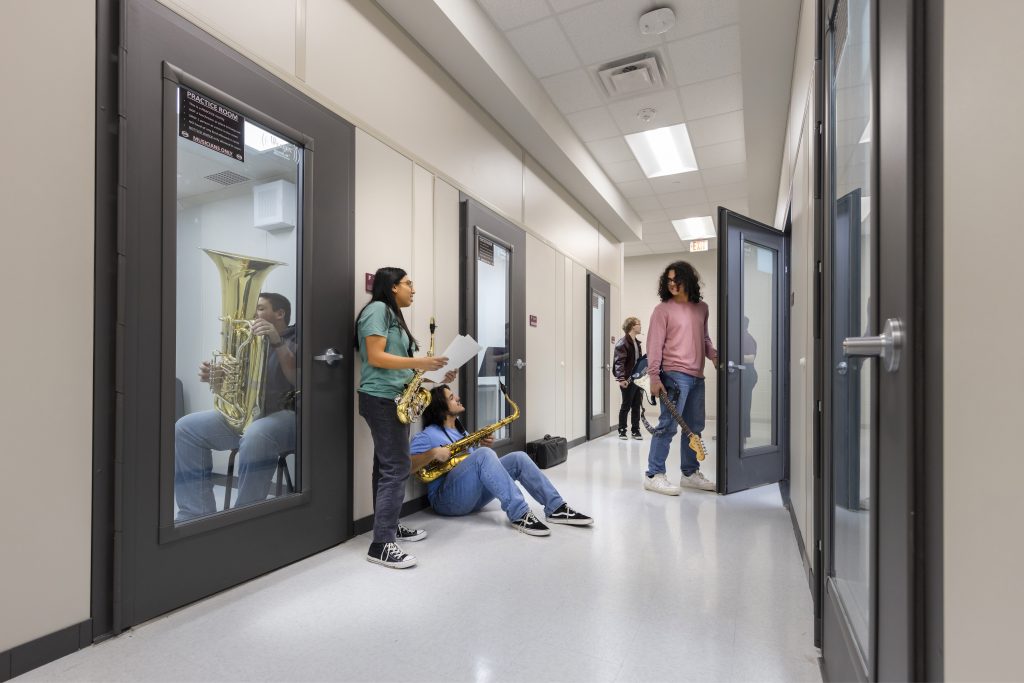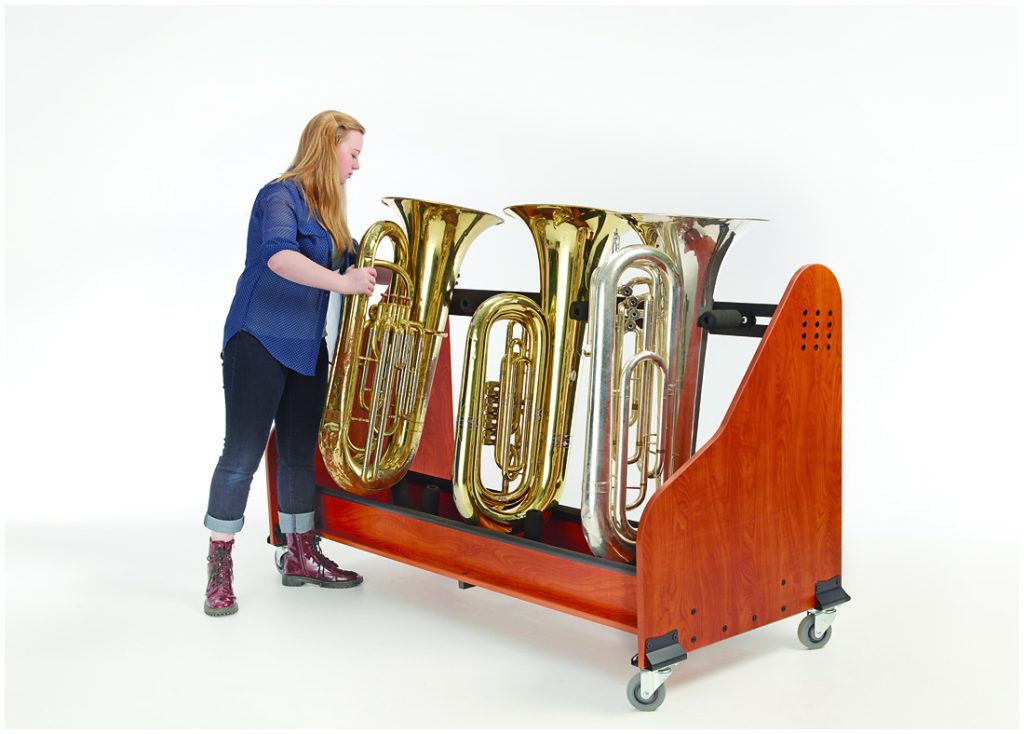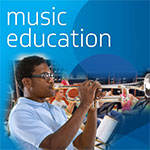
“The information contained in the Wenger Planning Guides is a great supplement to our Musical Acoustics course,” explains Doug Orzolek, Professor of Music at the University of St. Thomas (UST) in St. Paul, MN. “The Guides provide a solid foundational understanding of room acoustics, helping students apply theoretical concepts in practical scenarios.”
The Course
For nearly 20 years, UST has offered “Musical Acoustics” an interdisciplinary course now jointly taught by Orzolek and Jeff Jalkio a Professor of Physics.
Designed in several units, the course is intended to be a lab science that music students could take as part of their liberal arts requirements, exploring the interrelationship between music, physics and math. Emphasizing hands-on learning, the course engages students through practical problem-solving and demonstrations.
Orzolek says the Wenger Guides they use –
• Acoustics Primer
• Acoustic Problems & Solutions
• Performance Spaces Planning Guide
– provide students with a solid foundational understanding of room acoustics. The course builds on that knowledge, challenging students with questions like: How would you redesign your bedroom to make it better for sound? How would you improve our classroom to make it better for a string quartet? How would you change the floor? What would you do with the windows?
“We always marvel at how much our students appreciate the Planning Guides. I cannot thank Wenger enough,” he says.

The significant emphasis on room acoustics reflects both student interest and the practical necessity for musicians to transmit sounds effectively and expressively in various spaces. The curriculum balances theoretical knowledge and practical applications, covering concepts ranging from resonance and reflection to sound quality, sound isolation and hearing loss.
Addressing Hearing Loss
“Along with room acoustics, hearing loss is the other topic students tend to focus on,” notes Orzolek, who adds that the current generation of college students is predicted to have the most hearing loss of any generation because they are always plugged in. He believes room acoustics and hearing loss are interrelated. “We ask students if they are protecting themselves with ear plugs when they go to clubs, bars, concerts, sport games and other potentially loud events.”
Designing Home Studios
Orzolek sees a trend of more students today interested in how to design their own home music studio. Nearly all students in the course have a home studio including computers, keyboards, bass, monitors, speakers, amps, etc. They are using these studios for composing, writing, practicing and other activities. “Our Musical Acoustics course helps them design their home studio and consider how sound moves around the space,” he remarks.

A key course component is a field exercise where students leave the classroom to evaluate various performance spaces and classrooms on the UST campus. Students apply their knowledge in real-world scenarios by taking measurements, completing calculations and making subjective assessments. This hands-on experience is crucial for understanding room acoustics in a practical context.
While expressing appreciation to Wenger for widely sharing its expertise through these Planning Guides, Orzolek also tell students about the company’s importance to music education overall. “Wenger has made a huge impact – their music stands and chairs are found in nearly every school district across the country,” he concludes.

Note: To access Wenger’s Planning Guides, including those used in the UST course, click here and look under “Planning Guides” for the complete list, including some foreign-language translations.
The recently revised Planning Guide for School Music Facilities includes guidelines and checklists essential in planning an effective secondary school Music Suite. Five critical factors are explained: acoustics, floor plan, technology, storage and equipment.
To learn more about how Wenger can become a part of your planning team for a new construction or renovation project, contact your Wenger rep or call 800-493-6437.
There is no cost to leverage Wenger’s extensive expertise in equipment and facility planning for music education, performing arts and athletics.

